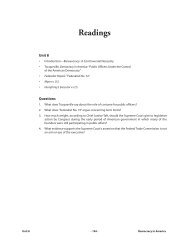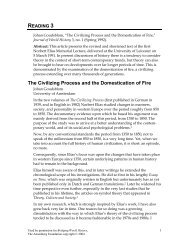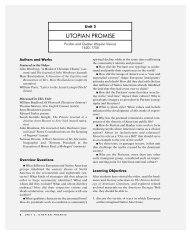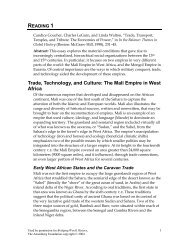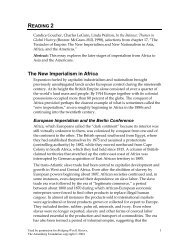You also want an ePaper? Increase the reach of your titles
YUMPU automatically turns print PDFs into web optimized ePapers that Google loves.
‘mysterious and unchanging East,’“ whatever nineteenth-century year they<br />
were removed from the loom (Irwin 1955, 14). <strong>21</strong> [End Page 41]<br />
From the 1880s until World War I, wealthy European and Euro-American<br />
women learned to drape their Kashmiri shawls over their pianos instead of<br />
their own shoulders. This high period of “Indian style” for British home<br />
decoration was part of late-Victorian eclecticism. Even as the manufacturers<br />
of European machine-made textiles tried to improve their designs, the British<br />
design reform, the Aesthetic, and the Arts and Crafts movements all<br />
emphasized in one way or another differentiating between the machine-made<br />
and the hand-crafted. By the late nineteenth century, the overall influence of<br />
these movements had transformed the political economy of taste in Britain<br />
and the United States. Using Kashmiri shawls as curtains or furniture covers<br />
attracted consumers whose tastes had been educated to appreciate the<br />
aesthetic superiority of artisan-made textiles in contrast to the aesthetic<br />
inferiority of the machine-made (Greenhalgh 1997, 105). It was no coincidence<br />
that the hand embroidery on Kashmiri shawls seemed to have made them<br />
desirable for interior decoration at the same historical moment that machinestitched<br />
embroidery replaced hand embroidery in British textile<br />
manufacturing (Parker 1989, 178).<br />
Thus, Kashmiri shawls could be represented as quite different types of<br />
commodities, from wraps that made women look like princesses to draperies<br />
for the piano, depending upon the fashion of the moment. In the early<br />
nineteenth century, representations of Kashmiri shawls were independent of<br />
their mode of production because European imitative shawls were also handwoven.<br />
Shawls from Kashmir were then valued for their lightweight warmth,<br />
their attractive exoticism, and the exceptional sensual pleasures of wearing<br />
them. European mass-produced textiles were never able to compete<br />
successfully with Kashmiri shawls as far as the sensual characteristics of the<br />
fabric were concerned, and they were far too expensive for all but the very<br />
well off. European-made shawls, however, did come to offer design<br />
distinction through the appropriation and modification of Kashmiri designs<br />
to suit European and Euro-American tastes, and this distinction was available<br />
at middle-range and inexpensive prices. Asian commodities like Kashmiri<br />
shawls became key objects for late-nineteenth-century aesthetic<br />
pronouncements by “taste professionals” who then preferred hand-crafted<br />
[End Page 42] textiles and other handicrafts in contrast to machine-made<br />
products of all kinds (see Auslander 1996 a for “taste professionals” in France<br />
and Greenhalgh 1997). Tracing the European development of an aesthetic<br />
taste for the hand-crafted instead of the machine-made requires separate<br />
treatment and can only be suggested here.<br />
Used by permission for Bridging World History, 12<br />
The Annenberg Foundation copyright © 2004



